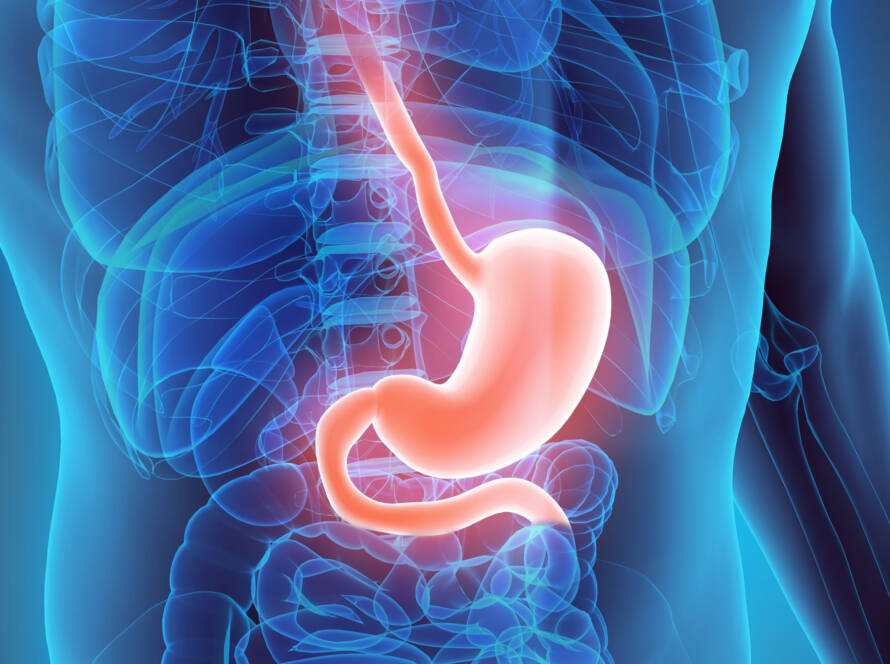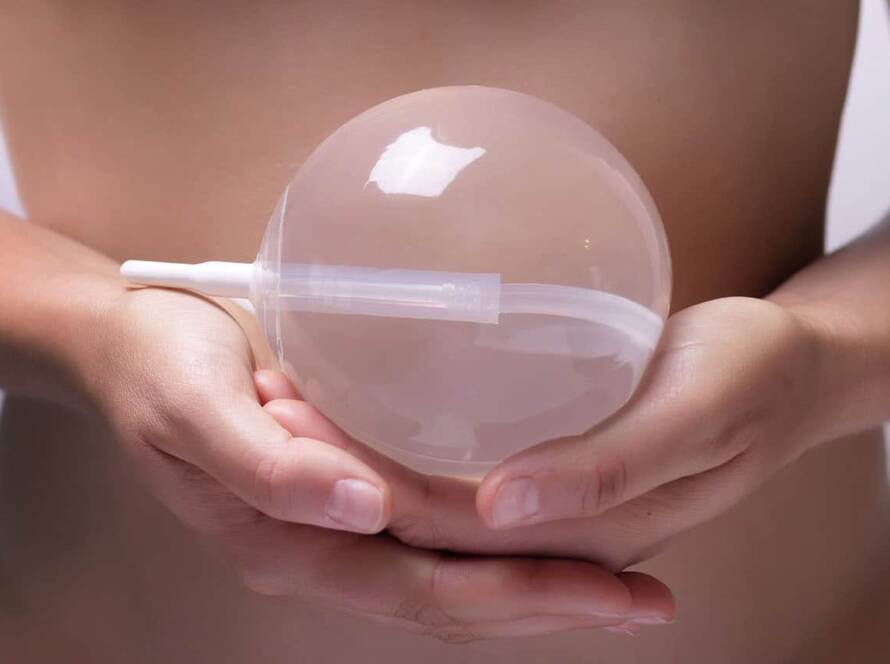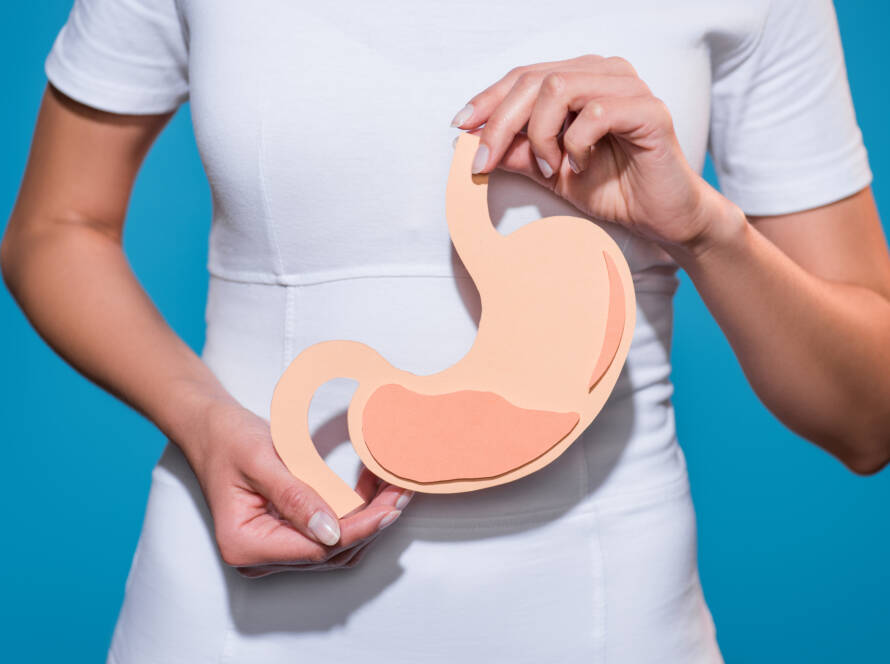There are now non-surgical methods to get rid of the weight that has become a “big problem” for both esthetic and health. The recommended gastric bypass surgery, as an alternative for patients who are not eligible for non-surgical obesity treatment options, is among the stomach reduction surgeries. With gastric bypass surgery, a method of weakening preferred by thousands of people in the world and Turkey, it is possible to get rid of excess weight and get an ideal body.
What is Gastric Bypass Surgery?
Bypass, which means “new pathway from the stomach to gut” in general surgery, is also a concept used in obesity surgery today. A bypass, a method for many diseases that block the gastric tract, is called gastric bypass surgery and is used to weaken it.
In gastric bypass surgery, based on the deactivation of most of the stomach, intestines are routed to allow ingestion of ingested food only at certain rates.
How Does Gastric Bypass Work?
In gastric bypass surgery, which restricts both intake and absorption of food, 95% of the stomach is disabled, including the twelve-finger intestine and the 1-meter upper of the small intestine. Stomach pulp is 15 -30 mL in gastric bypass surgery, which reduces the stomach size by 90%. The function of the gastric bypass pulp, which is generated from the top and can be at least stretchy, is to transmit the stomach to the full brain. Gastric bypass, which feels like a big meal, is an ideal way for people who can’t eat themselves or have a sense of saturation. The gastric bypass, which allows weight loss by allowing food from the stomach to enter the system from the further intestine, is an operation that many obesity surgeons recommend for these reasons.
How Do You Do Gastric Bypass Surgery?
Gastric bypass surgery, which is often preferred in obesity surgery, is performed by laparoscopy method. In this surgery attempt with small cuts on the skin, the surgical equipment required for the camcorder, surgical telescope, and surgery can be easily used.
In gastric bypass surgery, a small portion of the stomach area in the area where the entrance of the stomach and the ingestion tube are joined is closed and the operation is started by cutting off and leaving. A proximal gastric pulp smaller than 30 mL is created. when creating a new stomach pulp with a volume smaller than 1 tea, the rest of the stomach is not removed, it is only temporarily disabled. Food is provided to the new small stomach pulp created. The small intestines are attached to the gastrointestinal pulp by the stapler.
What Are Gastric Bypass Different Applications?
Gastric Bypass, Roux-en-Y (Proximal) The Roux-en-Y (Proximal) technique, considered the most commonly used gastric bypass technique, is also known as the bariatric procedure most applied in the United States. R-en-Y (Proximal) technique, among the operations that lead to minimum feeding problems, is 50-75 cm cut from the small intestine and connected to the new stomach pulp created. The other small intestinal tip, which passes gallbladder and pancreatic fluids, is integrated back into the intestines.
Gastric Bypass, Roux-en-Y (Distal) the gallbladder of the small intestine, which is 6 to 10 meters long, meets the gallbladder and is combined into a small stomach pulp from at least 1 meter. This method of underdigesting oil and starch, which results in faster weight loss, is often not preferred because vitamin deficiency is visible, but is always ideal for situations where necessary.
Loop Gastric Bypass Loop, the only gastric bypass method that is combined with the stomach without splitting the bowel, is not a very preferred method of gastric bypass but can be applied to patients if necessary. In this way, the patient’s comfort can be disturbed by the possibility of the gallbladder and pancreatic enzymes disturbing the esophagus and stomach.
What Patients Are Treated with Gastric Bypass Surgery?
Gastric bypass surgery is known as an obesity treatment option for obese patients. He has several criteria for the application of gastric bypass, which is an obesity surgery that can be applied to people who cannot lose weight and have several discomforts. For example, in the presence of diseases that reduce the quality of life, such as insulin resistance, and joint disease, the body mass index may be sufficient to be 35.
Blood pressure, asthma, etc. like, gastric bypass surgery, which can be a cure for diseases that obesity intensifies, even more, is recommended by doctors.
Overview of Gastric Bypass Operation Before and After
The following tests and examinations are always applied to those who have the body mass index required for surgery, and the physician evaluates the results and makes a decision.
All Abdomen ultrasound Lung Respiration Test Stomach Endoscopy (with anesthesiologist) ECG (Heart Graph) Blood Biochemistry Tests Lung Graph Hemogram Hepatitis Tests Hormone Tests Stress Test and ECHO (Electrocardiograph) as needed.
All of the tests that we have listed above are the subjects to be examined and examined by Anesthesia, Psychiatry, Chest Diseases, Cardiology, and endocrine experts. The surgery can be considered if there is no disease obstructing surgery, depending on your weight gain as a result of these examinations. The patient examined in anesthesia is evaluated by other doctors and a common decision is reached.
In gastric bypass surgery, sewing, medicine, healing, and nutrition are among the things patients are most curious about. Everyone’s pain threshold is different, and it’s different from the tolerance they give to drugs. The pain after surgery will be minimal with the anesthesiologist and surgeon-prescribed painkillers who closely monitor patients. In addition to pain relief supplements, the comfort of patients is always ensured if necessary. This surgery with the laparoscopic method will have very millimeter stitches, so no problems with the stitches will occur unless there is a big problem. The stitch mark will turn from skin to color in a few months and will be vague.
After gastric bypass surgery, the nutrition can be tested for leaks in the early days and if there is no problem, it is supported by liquid feeding. In the process of eating pure foods for two weeks, dietician support is also taken. The first year after surgery, patients are provided with various vitamins and mineral supplements. It is important not to disrupt these minerals and vitamins given to the patient’s needs.
What is Gastric Bypass Surgery?
Bypass, which means “new pathway from the stomach to gut” in general surgery, is also a concept used in obesity surgery today. A bypass, a method for many diseases that block the gastric tract, is called gastric bypass surgery and is used to weaken it.
In gastric bypass surgery, based on the deactivation of most of the stomach, intestines are routed to allow ingestion of ingested food only at certain rates.
How Does Gastric Bypass Work?
In gastric bypass surgery, which restricts both intake and absorption of food, 95% of the stomach is disabled, including the twelve-finger intestine and the 1-meter upper of the small intestine. Stomach pulp is 15 -30 mL in gastric bypass surgery, which reduces the stomach size by 90%. The function of the gastric bypass pulp, which is generated from the top and can be at least stretchy, is to transmit the stomach to the full brain. Gastric bypass, which feels like a big meal, is an ideal way for people who can’t eat themselves or have a sense of saturation. The gastric bypass, which allows weight loss by allowing food from the stomach to enter the system from the further intestine, is an operation that many obesity surgeons recommend for these reasons.
How Do You Do Gastric Bypass Surgery?
Gastric bypass surgery, which is often preferred in obesity surgery, is performed by laparoscopy method. In this surgery attempt with small cuts on the skin, the surgical equipment required for the camcorder, surgical telescope, and surgery can be easily used.
In gastric bypass surgery, a small portion of the stomach area in the area where the entrance of the stomach and the ingestion tube are joined is closed and the operation is started by cutting off and leaving. A proximal gastric pulp smaller than 30 mL is created. when creating a new stomach pulp with a volume smaller than 1 tea, the rest of the stomach is not removed, it is only temporarily disabled. Food is provided to the new small stomach pulp created. The small intestines are attached to the gastrointestinal pulp by the stapler.
What Are Gastric Bypass Different Applications?
Gastric Bypass, Roux-en-Y (Proximal) The Roux-en-Y (Proximal) technique, considered the most commonly used gastric bypass technique, is also known as the bariatric procedure most applied in the United States. R-en-Y (Proximal) technique, among the operations that lead to minimum feeding problems, is 50-75 cm cut from the small intestine and connected to the new stomach pulp created. The other small intestinal tip, which passes gallbladder and pancreatic fluids, is integrated back into the intestines.
Gastric Bypass, Roux-en-Y (Distal) the gallbladder of the small intestine, which is 6 to 10 meters long, meets the gallbladder and is combined into a small stomach pulp from at least 1 meter. This method of underdigesting oil and starch, which results in faster weight loss, is often not preferred because vitamin deficiency is visible, but is always ideal for situations where necessary.
Loop Gastric Bypass Loop, the only gastric bypass method that is combined with the stomach without splitting the bowel, is not a very preferred method of gastric bypass but can be applied to patients if necessary. In this way, the patient’s comfort can be disturbed by the possibility of the gallbladder and pancreatic enzymes disturbing the esophagus and stomach.
What Patients Are Treated with Gastric Bypass Surgery?
Gastric bypass surgery is known as an obesity treatment option for obese patients. He has several criteria for the application of gastric bypass, which is an obesity surgery that can be applied to people who cannot lose weight and have several discomforts. For example, in the presence of diseases that reduce the quality of life, such as insulin resistance, and joint disease, the body mass index may be sufficient to be 35.
Blood pressure, asthma, etc. like, gastric bypass surgery, which can be a cure for diseases that obesity intensifies, even more, is recommended by doctors.
Overview of Gastric Bypass Operation Before and After
The following tests and examinations are always applied to those who have the body mass index required for surgery, and the physician evaluates the results and makes a decision.
All Abdomen ultrasound Lung Respiration Test Stomach Endoscopy (with anesthesiologist) ECG (Heart Graph) Blood Biochemistry Tests Lung Graph Hemogram Hepatitis Tests Hormone Tests Stress Test and ECHO (Electrocardiograph) as needed.
All of the tests that we have listed above are the subjects to be examined and examined by Anesthesia, Psychiatry, Chest Diseases, Cardiology, and endocrine experts. The surgery can be considered if there is no disease obstructing surgery, depending on your weight gain as a result of these examinations. The patient examined in anesthesia is evaluated by other doctors and a common decision is reached.
In gastric bypass surgery, sewing, medicine, healing, and nutrition are among the things patients are most curious about. Everyone’s pain threshold is different, and it’s different from the tolerance they give to drugs. The pain after surgery will be minimal with the anesthesiologist and surgeon-prescribed painkillers who closely monitor patients. In addition to pain relief supplements, the comfort of patients is always ensured if necessary. This surgery with the laparoscopic method will have very millimeter stitches, so no problems with the stitches will occur unless there is a big problem. The stitch mark will turn from skin to color in a few months and will be vague.
After gastric bypass surgery, the nutrition can be tested for leaks in the early days and if there is no problem, it is supported by liquid feeding. In the process of eating pure foods for two weeks, dietician support is also taken. The first year after surgery, patients are provided with various vitamins and mineral supplements. It is important not to disrupt these minerals and vitamins given to the patient’s needs.
There are now non-surgical methods to get rid of the weight that has become a “big problem” for both esthetic and health. The recommended gastric bypass surgery, as an alternative…
In recent years, the gastric balloon has been raised much more with the increasing obesity problem. Especially those who aren’t too hot for surgery to get rid of the obesity…
G-Tube is the most common surgery performed in the world for obese patients and those who are unable to lose weight. Usually, patients are offered diet and exercise programs before…





